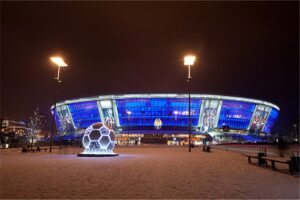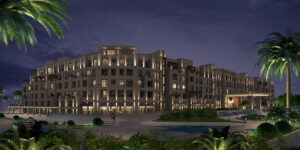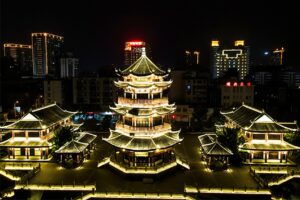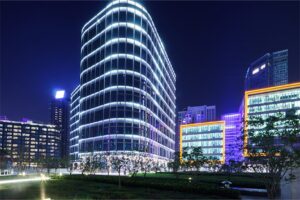1.What is IP rating for architectural led lighting?
The IPXX (Ingress Protection) rating of an architectural LED outdoor lighting is defined by its ability to protect against solid objects (such as dust) and water. The IPXX rating is usually made up of two numbers, with the first number representing the level of protection against solid objects and the second number representing the level of protection against water.
Outdoor lighting fixtures, especially LED lighting fixtures, generally require a high IP rating to ensure that they will function properly in all weather conditions.

2. The IP Rating Standards
Here are some common IP ratings and what they mean:
– IP44: Protects against objects larger than 1 mm in size and is splash-proof. Suitable for outdoor areas that will not be directly exposed to strong water currents.
– IP54: In addition to protection against dust and splashing water, it is also protected against harmful dust accumulation. Suitable for outdoor use, but not recommended for extreme environments.
– IP65: Dust is inaccessible and jets of water in any direction cannot harm the luminaire. Suitable for outdoor use where the luminaire may be affected by spray water.
– IP66: The luminaire is protected against strong jets of water and is suitable for outdoor use in heavy rain or similar conditions.
– IP67: The luminaire can withstand short periods of immersion and can generally be submerged at a depth of 1 metre for at least 30 minutes without water ingress.
– IP68: The luminaire can withstand prolonged, continuous immersion under water, typically over 1 metre deep.
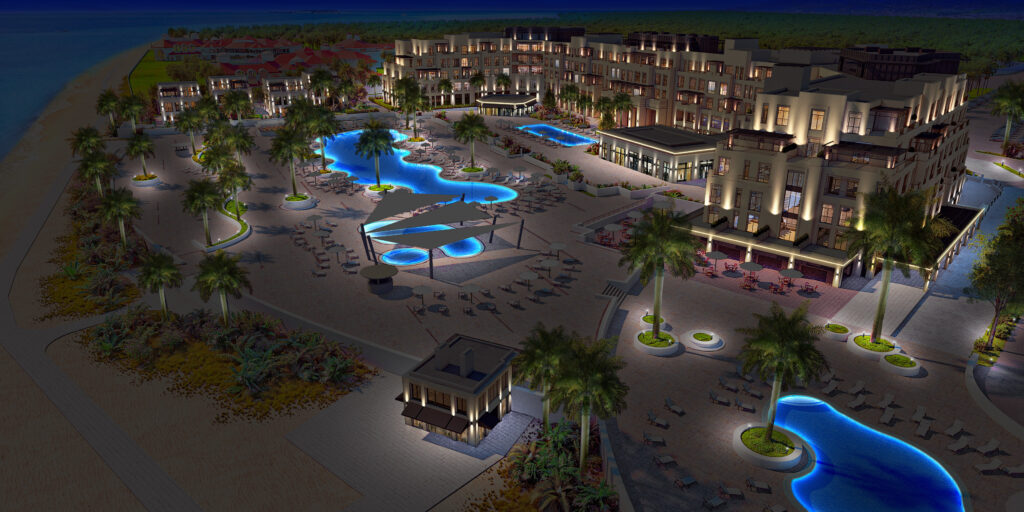
Specific rating standard is defined in the table below. Outdoor lighting products waterproof grade common starting is IP65, this article in the following will focuses on the difference between IP65-IP68.
Waterproof Level Definition:
| Level | Protection Against Solid Objects | Protection Against Water |
| 0 | No protection | No protection |
| 1 | Protection against solid objects over 50mm e.g. hands, large tools. | Protection against vertically falling drops of water e.g. condensation. |
| 2 | Protection against solid objects over 12.5mm e.g. fingers. | Protection against water droplets deflected up to 15 degrees from vertical. |
| 3 | Protection against solid objects over 2.5mm e.g. tools, thick wires. | Protection against spray up to 60 degrees from vertical. |
| 4 | Protection against solid objects over 1mm e.g. screws, most wires. | Protection against water splashing from any direction. |
| 5 | Protection against dust in harmful quantity. | Protection against low-pressure water jets from any direction. |
| 6 | Total protection against dust. | Protection against strong water jets and waves. |
| 7 | Protection against temporary immersion between 15cm and 1m in depth. | |
| 8 | Protection against prolonged effects of immersion under pressure. |
As can be seen from the definition of this table, IP65 and IP66 waterproofing belongs to the pressurised water level; IP67 and IP68 waterproofing are both water immersion level.

3. How to design IP rate for outdoor architecture led lighting?
The most common waterproof rating for outdoor lighting products is IP65 and IP66, which have already covered most of the outdoor lighting application scenarios.
IP68-rated products are designed for underwater use, which means they are intended to be installed and operated in water. Achieving an IP68 rating indicates that a product has a high level of internal sealing, effectively preventing water molecules from entering.
However, this also means that the conditions for heat conduction and dissipation are significantly challenging. These lighting devices need to dissipate heat through the surrounding water, which is a much more efficient process than in air, to ensure proper cooling of the lamps. Using these products in an air-cooled environment can be detrimental. It is akin to accelerating the aging process of a light from day one, effectively shortening its lifespan.
Generally, the higher the waterproof rating, the more challenging it becomes to manage heat treatment. This increased difficulty necessitates more sophisticated production processes, leading to higher costs. Therefore, a higher waterproof grade is not always better. The key is to achieve a level of waterproofing that meets specific demands and requirements

4. IP ratings for various lighting applications
Different lighting applications require different IP ratings based on the environmental conditions they will be exposed to. Here’s a general guide to IP ratings for various lighting applications:
- Indoor Use (e.g., residential, office spaces): IP20 to IP30: These ratings are common for indoor lighting, where protection against solid objects is necessary, but there’s no exposure to water.
- Bathrooms and Kitchens: IP44 to IP65: These areas require lighting that is protected against water splashes. IP44 is often used for general bathroom lighting, while IP65 is used for areas with direct water exposure, like above showers.
- Outdoor Use (e.g., garden, street lighting): IP65 to IP67: Outdoor lights need protection from rain and dust. IP65 provides enough protection for most outdoor environments, while IP67 is suitable for areas that might be submerged temporarily, like floodlights near water bodies.
- Industrial and Harsh Environments: IP65 to IP68: In settings like factories or areas with heavy dust and water jets, higher IP ratings are essential. IP68 is used for lighting that might be continuously submerged or exposed to extreme conditions.
- Swimming Pools and Fountains: IP68: For underwater lighting, IP68 is the standard, ensuring complete protection against continuous submersion in water.
- Specialized Applications (e.g., marine, hazardous locations): Varies: These applications might have specific requirements depending on the nature of the environment. For instance, marine lighting might need high IP ratings and additional features like corrosion resistance.
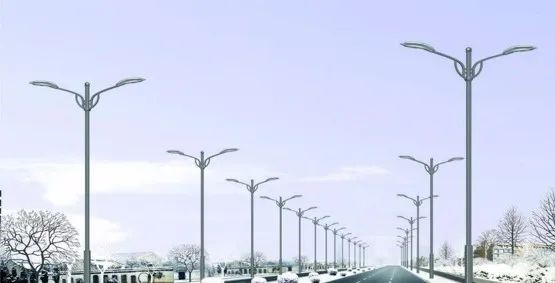
5. More discussion for high waterpoof rate IP65 IP66 IP67 and IP68
–IP65 Application
IP65-rated luminaires are ideal for full outdoor lighting applications where street lamps are directed downward, and the angle of inclination for stand-alone fixtures does not exceed 15 degrees. This rating is sufficient for such scenarios, provided that the fixtures do not have any structural components that tilt beyond a 15-degree elevation angle from the top surface. If such a tilt exists, IP66-rated luminaires are required instead. Common examples of applications that fit these criteria include street lamps, searchlights, downward-facing wall washers, and floodlights. These types of lights often have high power requirements, making the IP65 rating more conducive for effective thermal conductivity and heat dissipation.

–IP66 Application
For all upward-oriented outdoor lighting, as well as stand-alone luminaires with a tilt angle exceeding 15°, or for applications involving single-sided secondary contact, luminaires with an IP66 waterproof rating are mandatory. This rating ensures sufficient protection against powerful water jets and dust, making it ideal for most landscape lighting applications. These include architectural lighting, bridge and tree projectors, translucents, façade wall washers, line lights, and point sources, all of which typically fall under this category. The IP66 rating is essential for the longevity and reliability of these lighting fixtures in various outdoor environments.

–IP67 and IP68 application
IP67-rated luminaires are recommended for all outdoor applications involving gaps of 1 meter or less, such as flooded ground buildings and waterfront areas, as well as for fixtures embedded in building façades. This rating is ideal for ground flower beds, walkways, steps, waterfront wall washing, spotlights, railings, and embedded linear and point light sources within buildings. For special applications where gaps exceed 1 meter in flooded ground buildings, consulting IP68-rated luminaires is advisable. When selecting IP67 or IP68-rated fixtures, special attention must be paid to the thermal conductivity and performance of the luminaires. While achieving a high waterproof rating is often feasible, ensuring efficient thermal conductivity and heat dissipation is a significant test of manufacturing quality.
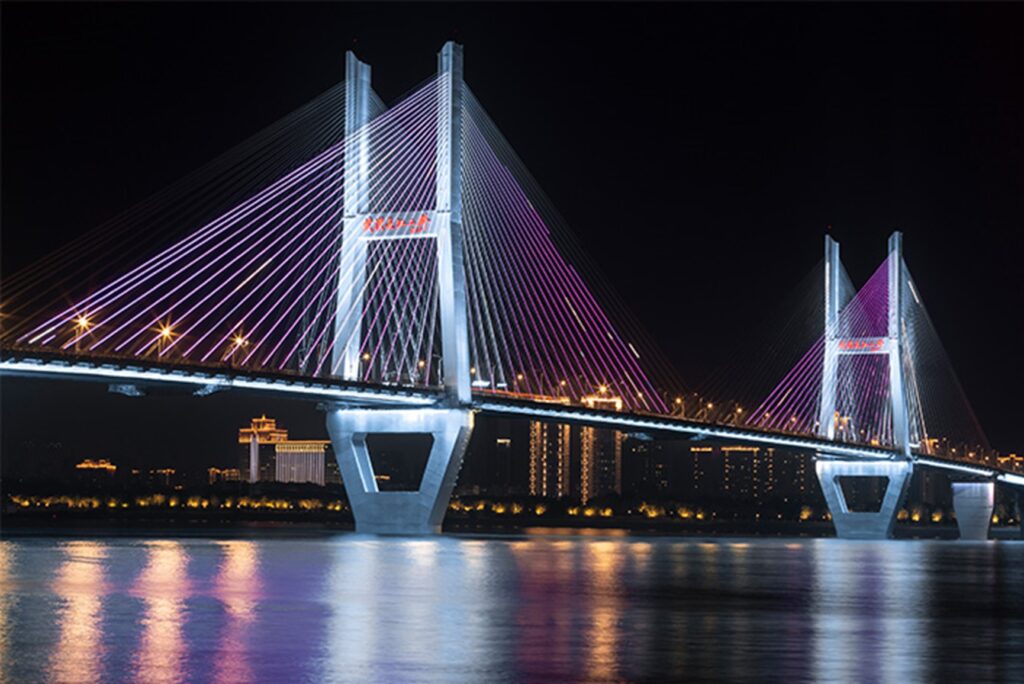
From an application standpoint, selecting the correct waterproof grade for lamps and lanterns varies depending on the situation. It’s important not to blindly opt for IP68-rated fixtures, as the need for such high-grade waterproofing is relatively rare. Even if a fixture passes the IP68 grade, it doesn’t necessarily mean it’s suitable for direct underwater use. In many cases, with proper secondary protection, ordinary IP65, IP66, or even IP67-rated fixtures can be sufficient.
Aside from IP68-rated applications, we mainly consider IP65, IP66, and IP67 ratings. These can be categorized into two primary scenarios: IP65 and IP66 for areas subject to drenching, and IP67 for locations with intermittent flooding. This distinction helps in choosing the right level of waterproofing for different environmental conditions.
Conclusion
In summary, users should select products with the appropriate IP rating based on their specific application scenarios. Choosing the right product for the right environment is crucial. It’s important not to blindly trust data levels or assume that a higher waterproof grade is always better. Instead, the focus should be on meeting the specific requirements of the intended application. Selecting an IP grade that aligns with the actual needs of the environment ensures both efficiency and effectiveness. Any problem, please feel free to contact solutionproled. We will give you professional consultation and assistance.

